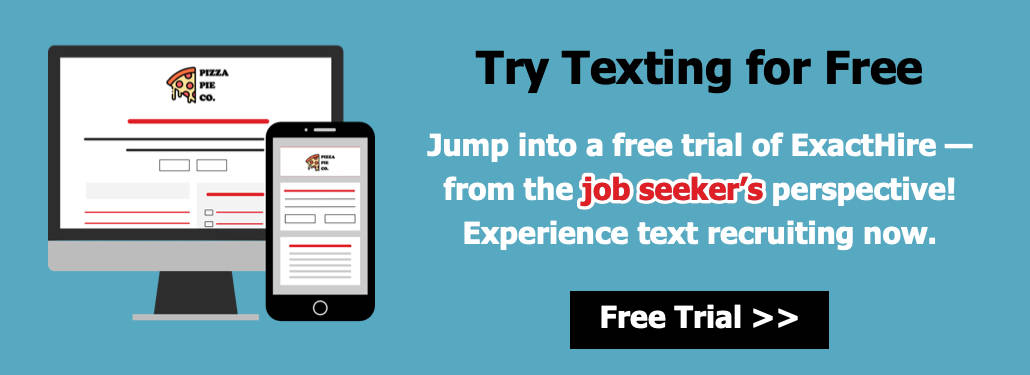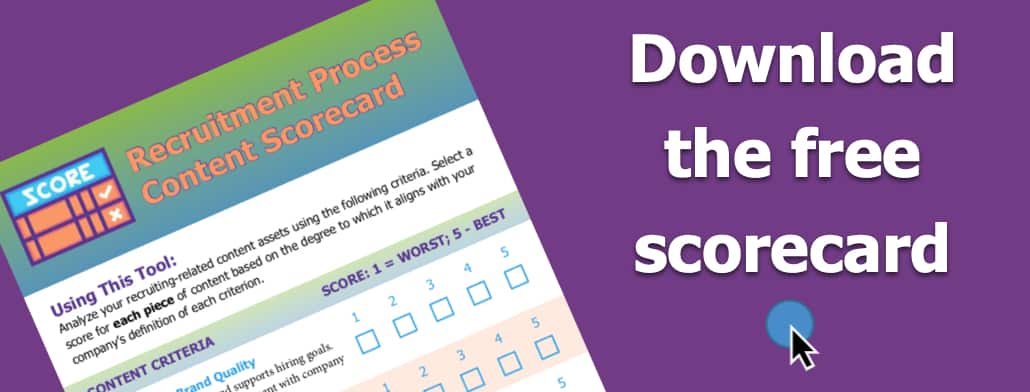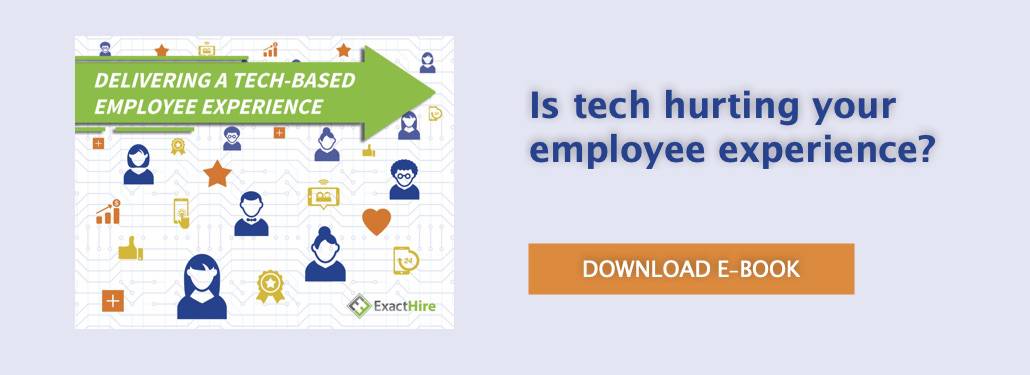Employer Strategies for Successfully Hiring Justice Involved Job Candidates
My gut tells me that many employers are open to the idea of hiring individuals from the justice involved community, but have historically avoided the opportunity for a variety of reasons. Whether they previously had an abundance of other candidates to consider or were intimidated about the steps involved, many organizations haven’t proactively included this untapped talent pool.
After all, they haven’t been sufficiently motivated to do so. That changes now.
Why you should consider hiring the justice involved population
Today, employers can’t afford NOT to look at every viable employee population. Increased awareness and support for inclusive hiring practices coupled with historically low unemployment suggest that the time is ripe for employers to implement strategies that successfully source and retain justice involved individuals.
Here are a few of the benefits to employers who engage employees who are formerly incarcerated or on work release, parole, or probation.
Better job candidate flow
Low unemployment is especially crippling for industries that traditionally experience high turnover in hourly positions and/or with a contingent workforce. With nearly one in three American adults holding a criminal record (ACLU, 2017), employers who are able to successfully engage this population are poised to win the war on talent.
Giving justice involved individuals another chance is the right thing to do
The formerly incarcerated combat a pervasive social stigma in many facets of their life, and it often impedes their ability to find work. In fact, according to the same ACLU study, 75% of formerly incarcerated people will remain unemployed a year after release. When someone has served his/her time, society should give them a second chance–not a re-sentence once they are released.
Reducing recidivism pays for itself
According to a 2018 special report from the U.S. Department of Justice’s Bureau of Justice Statistics, across 30 states 5 out of 6 (a staggering 83%) of state prisoners released in 2005 were arrested at least once during the 9 years following their release. Recidivism, or the “tendency for a convicted criminal to reoffend,” is on the rise.
And, it’s no surprise when we consider the absence of sufficient resources to support transitioning justice involved individuals back into society. This makes it hard for the formerly incarcerated to get over what some call the “three hots and a cot” mentality.
Consider that the Gross National Product (GNP) is losing an estimated $78 billion to $87 billion annually as the justice involved remain unemployed, according to the aforementioned ACLU report.
Employer tax incentives
Companies who hire the formerly incarcerated may be eligible for hidden hiring incentives such as the Work Opportunity Tax Credit. WOTC is a federal tax credit available to employers that hire individuals from specific targeted groups that have consistently faced significant employment barriers. Among these targeted groups are “qualified ex-felons” who are defined as individuals who are hired within a year of being convicted of a felony, or being released from prison from the felony.
Create a supportive network to succeed with the justice involved
It’s one thing for companies to be compelled to act based on the benefits mentioned above; however, in order to realize success in hiring and retaining the justice involved job candidate population, your organization must implement an internal infrastructure that can accommodate their unique needs. Additionally, it should utilize established external resources that may already be available in your area to help transition the justice involved back to work.
This is easier said than done, as there is not an abundance of model employers showing the rest of us how to do it. And, perhaps that deficiency is part of the explanation for the slow adoption of hiring this population.
The best intentions are only a fraction of what’s required for success in employing the justice involved. Employers must put systems and services in place to get this source of talent back to work. According to SHRM’s Getting Talent Back to Work Toolkit, employers should focus on
- Reliable Checks – working with reputable background checking agencies to make sure the data you use to make decisions about a candidate’s suitability for employment is sound.
- Relevant Assessment – ensuring your organization’s methods for assessing criminal records on an individual basis are relevant.
- Reasonable Risk – comprehending and assessing the reasonable risks associated with hiring this population so that you can proceed confidently.
Within these three categories, there are many steps organizations may take to set themselves up for a higher percentage of success in employing the justice involved population. Here are some ideas for consideration.
Make connections during the pre-release period
Consider offering a candidate training program for incarcerated individuals six months prior to their release. Just as you would approach tuition reimbursement for an in-demand nursing student, ask pre-release individuals who have been identified as good candidates for a commitment to work for your organization for a period of time so that they may receive important life skills and a starter wage. This type of arrangement can go far in building employee loyalty in a tough employee retention market.
Develop relationships in your community
Employing the justice involved is a careful undertaking, and can be enhanced by positive and close relationships with local sheriff departments and other representatives at the Department of Corrections (DOC), staffing agencies and other transitional support agencies.
Set expectations with internal staff
For success in employing the justice-involved population, you need to dedicate internal resources to properly setting expectations and training existing staff members on how to undergo this initiative in a productive way. Be realistic and transparent around challenges that may surface, and develop strategies about how your company will address those challenges before you find yourselves in the moment.
Make sure that your organizational structure models success for justice involved individuals. For example, don’t have a single working area or department where justice involved employees represent a majority of the unit. This is their time to transition back into the workforce and recognize positive habits and behavior from others who have succeeded in the organization. If you offset that balance, then negative habits can be perpetuated with poor outcomes.
Invest in offering on-site services for justice involved employees
Some justice involved individuals fall circumstance to rising recidivism rates because they don’t have reasonable access to the services and support they need to get a foothold in the world after release. If your organization is serious about successfully employing this population, then consider offering some of these services:
- Reentry resources – Links to and documentation about existing public reentry services in your community. For example, Orange County, California has a robust post-incarceration resource toolkit on its website.
- Basic food needs – Make information available about local food pantries and agencies that make sure people don’t go hungry. Help employees apply for food stamp benefits.
- Spiritual support – Consider on-site chaplain services so employees can nurture any of their spiritual goals and confide in a third party.
- Medical care – Make sure that employees are afforded time to take care of medical needs and given information about how to obtain access to prescription drugs, including mental health care when applicable.
- Basic paperwork – Remember that your justice involved hires may need important documents either located and/or reproduced such as birth certificate, Social Security card, personal ID card and/or driver’s license.
- Substance abuse support – Recognize that some of your justice involved hires may struggle with substance abuse and therefore create an environment that is supportive of substance abuse counseling and rehabilitation so that destructive habits that often lead to crime aren’t repeated.
- Ride planning – In order to promptly arrive to your workplace, your employees may need ride sharing programs, access to information about convenient public transportation options, and/or an employer-provided bus to transport employees to and from their current residence or halfway house to your job site.
- Flexibility for required meetings – A common challenge for recently released individuals is maintaining availability for a shift job while also showing up for required probation or parole officer meetings that might happen in the middle of the day. With proper communication, offer these workers flexibility to attend the meetings that are critical for their post-release success.
- Soft skills training – In some cases, justice involved individuals may have never learned about or been exposed to positive models for appropriate communication, social behavior, or even cleanliness/hygiene. Understand that services around these soft skills may be critical for employing this population with success.
Communicate your intentions clearly
Because much of employers’ hesitancy to hire justice involve populations is attributable to the stigma often associated with the formerly incarcerated as well as the company’s tendency toward compliance and protectiveness, clear communication is a driver of employment success for this talent group.
Clear communication includes both adjustments in traditional employment policy as well as external job advertisements, company culture content and screening and interview process design.
Remember that it is a violation of Title VII to reject applicants because of criminal records unless it is job related and consistent with business necessity. Employers have an obligation to clearly define what is job related and consistent with business necessity. They should reevaluate the role and scope of background checks in the hiring process, and use effective job evaluation to identify which criminal offenses will not work with which jobs.
Set realistic expectations with your justice involved candidates
Not every employer is going to be able to employ every justice involved employee. However, there is power and respect in being transparent about the opportunities and potential path available with your organization. I recently attended an event (more on that below) where they talked about the “ABC Jobs” trajectory for the justice involved:
- Any job
- Better job
- Career
Which of those types of jobs can you offer this population? And, if it is just any job that has a low wage, how can you prepare that individual to succeed in that job and then move on to another organization (maybe one with which you partner on these programs) where they can achieve the next step?
This job pathing model can improve your community by creating work that improves individuals, makes your company productive and advances the public good through reduced spending due to rampant recidivism.
Anticipate potential setbacks
There will be ups and downs in any endeavor to create an infrastructure for employing justice involved populations…as there is with any other talent population, too. However, being aware of setbacks through conversation with other employers, local law enforcement, state agencies, etc. will bring to light things you can plan to address:
- “Ban the box” legislation – Do you have work sites in geographic areas that are NOT subject to “ban the box”? If so, then take another look at your employment application and consider whether any questions about a candidate’s criminal history are potentially deterring qualified, but justice involved individuals from considering employment with your organization.
- Shift challenges – Is your work shift schedule such that it makes it impossible to accommodate the needs of justice involved individuals who must attend parole meetings? As previously mentioned, take measures now to consider alternative strategies for meeting transportation needs and addressing shift requirements.
- Recognize bias toward unexplained issues – I recently met someone who is employed with the city government and who was previously justice involved. She explained that it is not uncommon for little, unexpected things to happen that can adversely impact the positive trajectory of a justice involved individual. She encourages others to get the facts before jumping to negative conclusions. For example, she has seen malfunctioning ankle bracelets cause productive employees who have done nothing wrong to be hauled away by police on the job in front of co-workers. Without sensitivity to the root cause of such problems, bias and gossip could lead to a lack of support, or even wrongful termination.
The time is now
Is your organization ready to get serious about considering this untapped talent population? I hope the considerations outlined in this blog inspire exploration of this talent pool and fine-tuning of any of your existing initiatives.
Author’s Note: I recently attended a remarkable “Second Chance Staffing Visioning Event” held in January 2020 at Butler University and in conjunction with Allegiance Staffing. This interactive session was a kick-off to a joint research project between these partners and others to explore the job performance of those with criminal backgrounds while on the job. There is not yet much (or current) research in this specific area and the event brought together individuals from social service agencies, businesses, and the government–including thriving employees who have been justice involved. I’m excited about the direction of this research as it perfectly aligns with making a positive impact and with the challenging job landscape. Given the lack of formal studies in this area, their goal is to conduct a more detailed empirical analysis of the relative workplace performance of justice-involved citizens, as well as identify factors affecting this performance. Such a study requires the assistance of local employer(s) willing to share data regarding employees’ attendance, aptitude, and attitude, and they are currently in the process of securing these partners.
Can’t find enough job candidates for hourly positions?
Does your job seeker experience need improvement? Jump into a quick, free trial of ExactHire’s hiring software from the job seeker’s perspective. Find out first-hand how features like multi-job apply and text recruiting can fill your applicant pipeline today!






